Manan writes about the success in teaching Osho’s meditations in his adopted home town Pokhara.
I found myself travelling in Nepal and by chance, or through divine destiny, met a young principal of a private school at a meditation centre near Pokhara. He invited me to visit his school and introduce meditations at the school.
I soon found myself connecting to many other schools and for the past seven years or so – and intensively during the last three years, since my retirement from teaching full-time in Australia – have been sharing Osho’s meditations in schools in Pokhara, from kindergarten up to and including college and university students.
It is beautiful that on so many occasions the teachers grasped the opportunity to meditate with the children, which is very encouraging for them. For the teachers and the older students, I have also given introductory talks on Osho’s vision about the five dimensions of education, with great emphasis on the two dimensions usually missing from mainstream educational institutions: the Art of Living and the Art of Dying. On some occasions an extract of an Osho video has been shown in the classroom with an electrified response from the children and young people.
The response by the principals has been very supportive, because they are aware of the enthusiastic response of the students to meditation, which has created a much more positive atmosphere in their schools.
As meditations have been done over long periods, it has been noted that a buddhafield of silence and light has settled in the classrooms, making the schools more uplifting places to set foot in! In such an atmosphere, the children and many of the teachers have become much more relaxed and creative, celebrating their uniqueness.
Osho’s active meditations regularly shared in the schools are Kundalini, Dynamic, Nataraj, Mandala, and the softer meditations such as Devavani, Nadabrahma, Gourishankar and Osho Vipassana. Add to that also the meditative therapies such as the Children’s Mystic Rose and No Mind, as well as those developed with Osho’s guidance or in his buddhafield: Chakra Sounds, Chakra Breathing, Secret of the Golden Flower, Relaxing the BodyMind, Science of Hypnosis, The Forgotten Art of Talking to the Body, Atisha’s Meditation, Mahamudra, Lataif (from the Sufi tradition), and several meditations from the Vigyan Bhairav Tantra.
Younger children tend to love Kundalini, and in particular the Children’s Mystic Rose. In Kundalini, the younger children enjoy the opportunity to move, express and enjoy their bodies and in the Mystic Rose for Children, they love to laugh and be crazy, also known as pagal in Nepali. Then the silence and dropping inwards happens more easily.
In most cases the meditations have been shortened to fit in with the classroom timetable and the children’s age, especially for the younger ones. For example, the four Kundalini stages are shortened to 7,5 minutes instead of their normal 15-minute length. Dynamic has been taught to older children in a shortened version as well.
When introducing a meditation I first ask the class, “Would you all like to meditate now?” And, “Is there anyone who does not want to meditate?” These questions affirm their essential freedom and give them the opportunity not to participate if they do not wish to. In practice, very few choose to opt out.
After the stages of the meditation are clearly explained and demonstrated, I play the music from my PC via a portable loudspeaker. A vast presence which I call Osho, then fills the room with light and a playful dancing mystery of silence. I always join in with everybody else. I do not plan or prepare in advance what meditation to do. I arrive in the classroom, then my intuition comes in, and my inner guide and vision sees and knows what meditation is good for that unique moment.
At the end, when the children open their eyes… it’s always a precious moment indeed; their eyes, and their auras and chakras, are shining with the light of their being for a few moments before the active doing mind and personality return. As I look at them, the 20 to 40 individuals in the room become one presence of light, love and silence. I often invite them to share their experience – if they can find any words!
On some occasions, I have prefaced the meditation with reading an extract from a discourse by Osho, especially for the older students. This can have surprising results, such as the time when a class-ten girl saw Osho’s picture on the cover of the book, went into a sort of trance and then declared, “I knew him in my last life!” Her doubting mind then returned a little so that she asked me, “Is that true?” I replied, “Please trust your inner knowing. As far as my inner knowing is concerned, yes, it is true.”
I remember, on one occasion in Pune, whilst participating in a Devavani meditation, I was immersed in what was – unmistakably to my inner vision – the presence of dolphins. In case I was deluding myself, I wrote to Osho and he said, “This is beautiful. Experience it for yourself for a while before sharing it with others.” Later he commented: “Share with others through your vision.” So, with these children and students also the dolphin energy meditations have been shared and much enjoyed.
I have learned so many lessons while teaching Osho’s meditations, and perhaps the most significant one is that I never know beforehand what can be possible and am always surprised what happens and how magical and mysterious it is. There have been challenges and obstacles to the sharings, most of them rooted in the nature of the educational system itself, with its over-emphasis on competition, goal setting, absorbing knowledge to pass exams, and the general over-emphasis on the importance of the development of ego, personality and the intellect.
The teachers tend to teach the way they have been taught and treat children and young people the way they were treated at school themselves. Hence, the first step with the teachers is often to encourage them to be aware of their own educational conditioning – and I have observed significant positive changes in the teachers as well. For example, the tendency in Nepal to indulge in violent punishment has been dropping away with the deeper understanding that beating children, and in general frightening them, does not facilitate genuine learning.
The lessons being learnt by the children are: Be just yourself, Do not compare or imitate or compete. You are unique. Be courageous to be alone in the group. You can trust your inner knowing. Be in this moment and relax. Love. Allow the energies to rise upwards to the heart, third eye and crown. Allow witnessing of the mind. Suchness – let it all just be, Have patience and mind-created problems will drop away in their own time.
The teachers are reminded that the original and true meaning of the word ‘education’ is to draw out, through their loving presence, the unique essence of each new version of humanity, and to be aware of how society’s conditioning has distorted that original meaning. I often am invited to give talks on meditation to the entire school.
And of course, one of the main challenges is their religious and cultural conditioning. I often explain that meditation is about awareness and transcendence of any conditioning, and not about fighting that programming. Surprising results have happened, such as the teenage boy who stood up in front of his parents – I was present to witness it – and declared, “I do not want to be a Hindu – I just want to be myself!”
From this naturally follows that I introduce older students to Osho’s discourses on Zarathustra, where he talks about the camel, the lion and the child, and becoming a conscious actor in society. In Nepal, 90,000 years of Hindu conditioning is a heavy burden covering the essence with so much dust, but anything is possible if left to existence, to Osho and then – patience… For myself, this has been an essential learning. As Osho himself said to me once:
“Let things happen in their own time and pace, and then the wisdom of looking at the beauty of what has happened, rather than pushing for more, can flower.”
Finally, what do I or anyone else know about what has happened and how these meditations could change the children’s present and future lives? It is all about creating a balance in an imbalanced educational system where there is too much emphasis on acquiring borrowed knowledge. Osho’s two extra dimensions of education remind us that we are all born with our natural intelligence intact – and frequent and consistent meditation helps to remind us of that – sammasati!
It is beautiful that several of the children who had participated in the meditations in Pokhara have over the years been initiated into Osho’s sannyas. So have two of the school principals – and the children and principals meditate outside school as well. Several of the students, who have been doing Osho’s meditations for a few years, have clearly gone very deep within themselves. They have commented on their joy and willingness to continue. I can see that much light and silence has settled into their chakras.
It is also of note that Osho visited Pokhara and wanted to live there. It feels like a place which encourages meditation naturally and my rather more esoteric inner visionary mystic sees Annapurna Himalaya as the sixth chakra of the planet. Many visiting friends also say that it is an easy and beautiful place to meditate.
Related article
- Manan – 12 April 2023


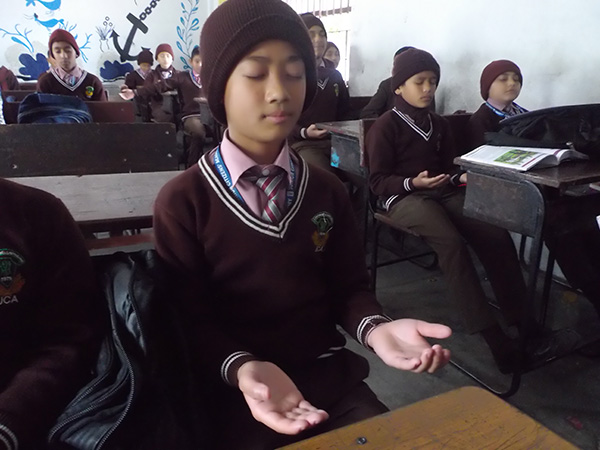

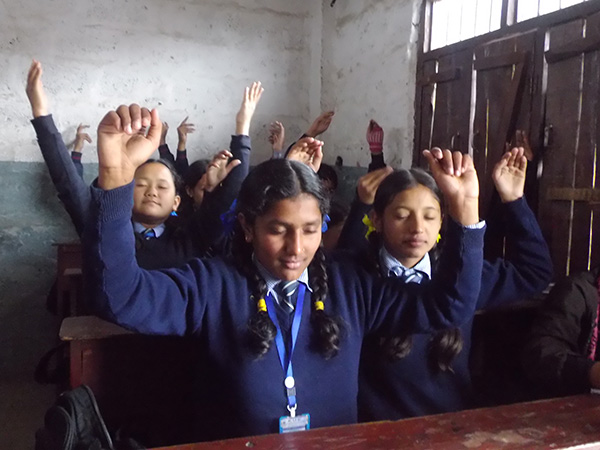
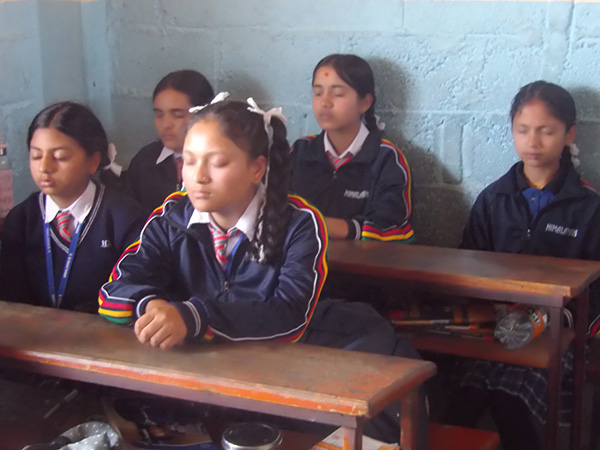
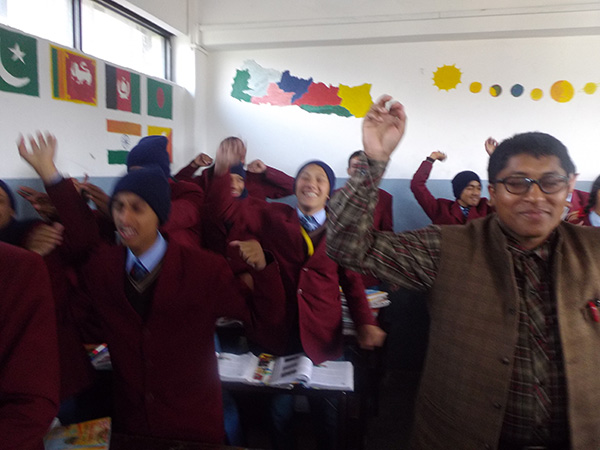
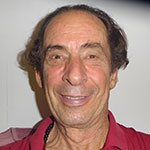

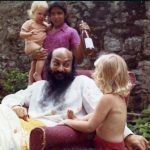
Comments are closed.